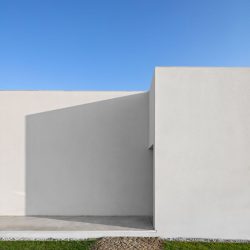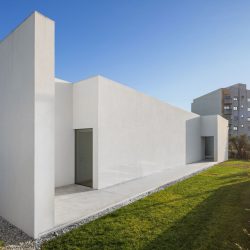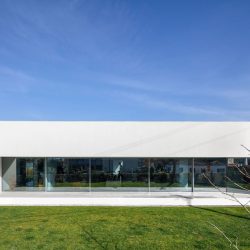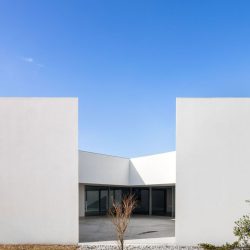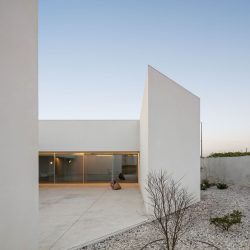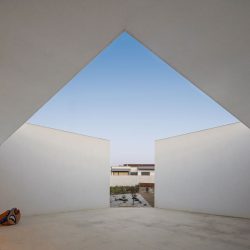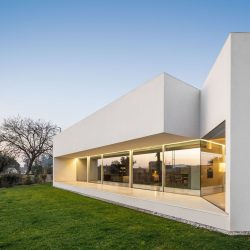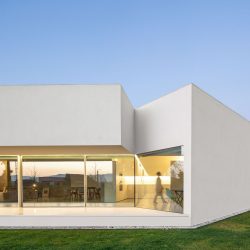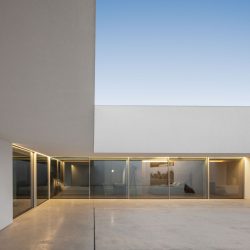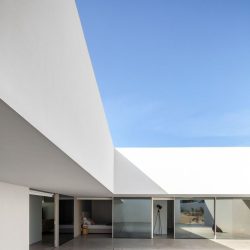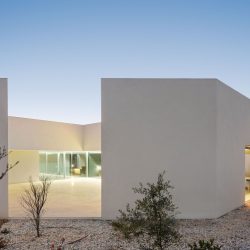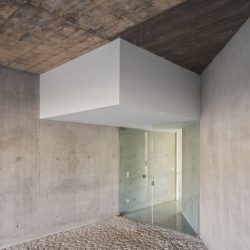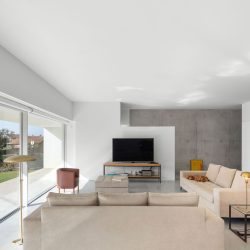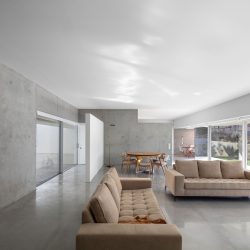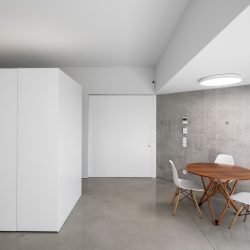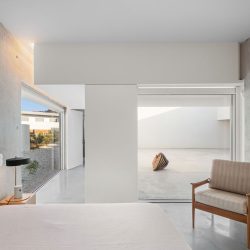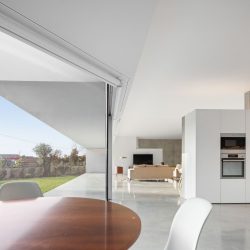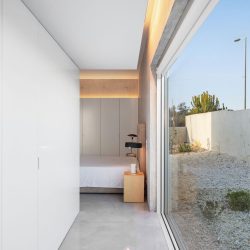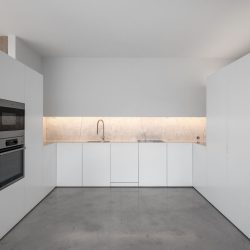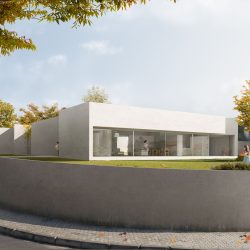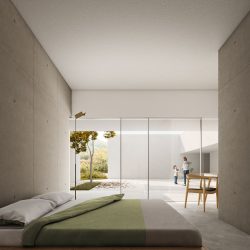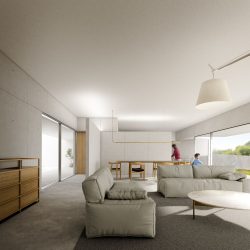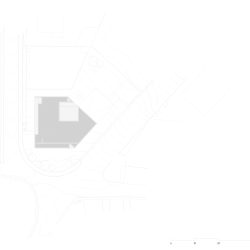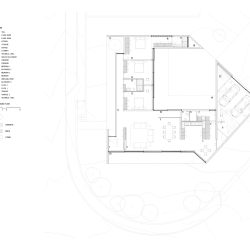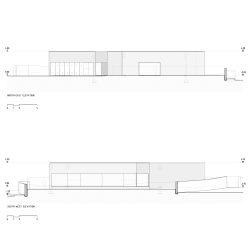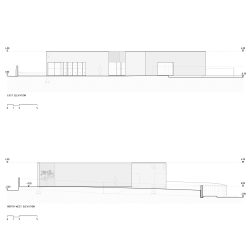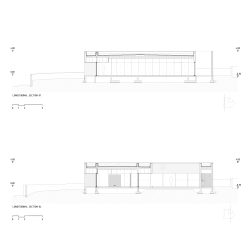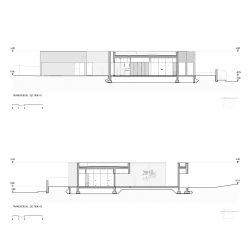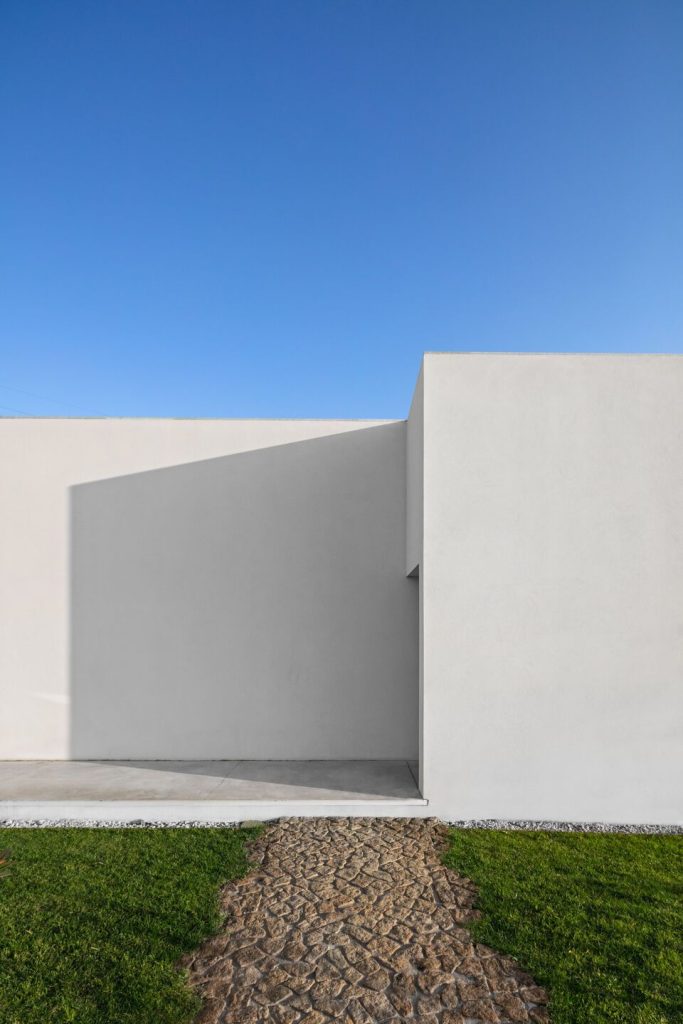
NOARQ – Jose Carlos Nunes de Oliveira . photos: © Joâo Morgado
The intervention site has an area of 931.00 m2, situated on a corner with a curved front and tight angle. The topography, approximately 1.0 m above street reference levels, follows the slopes of the roads bordering the site, towards the intersection.
It is an urban area in the process of definition, where rurality predominates with scattered urban presence. The landscape does not raise specific concerns. It is eclectic, fractured, and dispersed. The plot is part of a housing development. The request is for a single-family dwelling project, with three bedrooms and covered parking.
The main concern is exposure to public scrutiny, considering the relationship between the extent of the street frontage and the geometry and area of the plot.
The dwelling occupies an area of 357.70 m2 and is developed on a single floor. The layout forms an irregular polygon defined by faces parallel to the alignments of the public roads. At the center of the polygon, a quadrangular courtyard is carved out.
The building program is divided into three zones:
1. Social area exposed to the corner, facing southwest.
2. Bedroom area, delineating the north and opening to the courtyard on the east side.
3. Covered parking, shielding the south front and opening to the west.
The privileged living and service spaces of the house are arranged around the central courtyard, which supports domestic activities and is sheltered from the elements by a covered exterior gallery. The social area comprises a living room and dining room, seamlessly connected to the kitchen and breakfast area. Kitchen cabinets, at a height of 2.1m, partially separate the common space and provide access to the pantry and laundry room.
The private wing of the house consists of two bedrooms sharing a bathroom, and one bedroom with a dressing area and private bathroom. The parking area is a covered space accessed from the kitchen through a vestibule.
The compositional strategy is grounded in sustainability as an ethical principle, prioritizing economic sustainability and the life cycle of construction. It serves as a response to the chronological aging of architecture, meteorological factors, and the need for efficiency, energy certification, safety, ecology, and inclusivity. Therefore, it seeks passive and skeletal architecture without formal concessions or constructional artifices. Structural walls and slabs expose their concrete nature, while remaining walls are economically clad in plastered masonry.
The facades are clad with External Thermal Insulation Composite System (ETICS). The ceilings are made of plasterboard, concealing the house’s infrastructure networks for reasons of economy and accessibility. Heating is integral and integrated into the flooring.
The outdoor floors consist of cobblestones made from the material that emerges from the ground, granite.
The walls of the house are enveloped by natural elements that cover and diminish the visual presence of the walls. Vegetation is part of the landscape insertion strategy, utilizing species endemic to the territory in which it is located.
_

